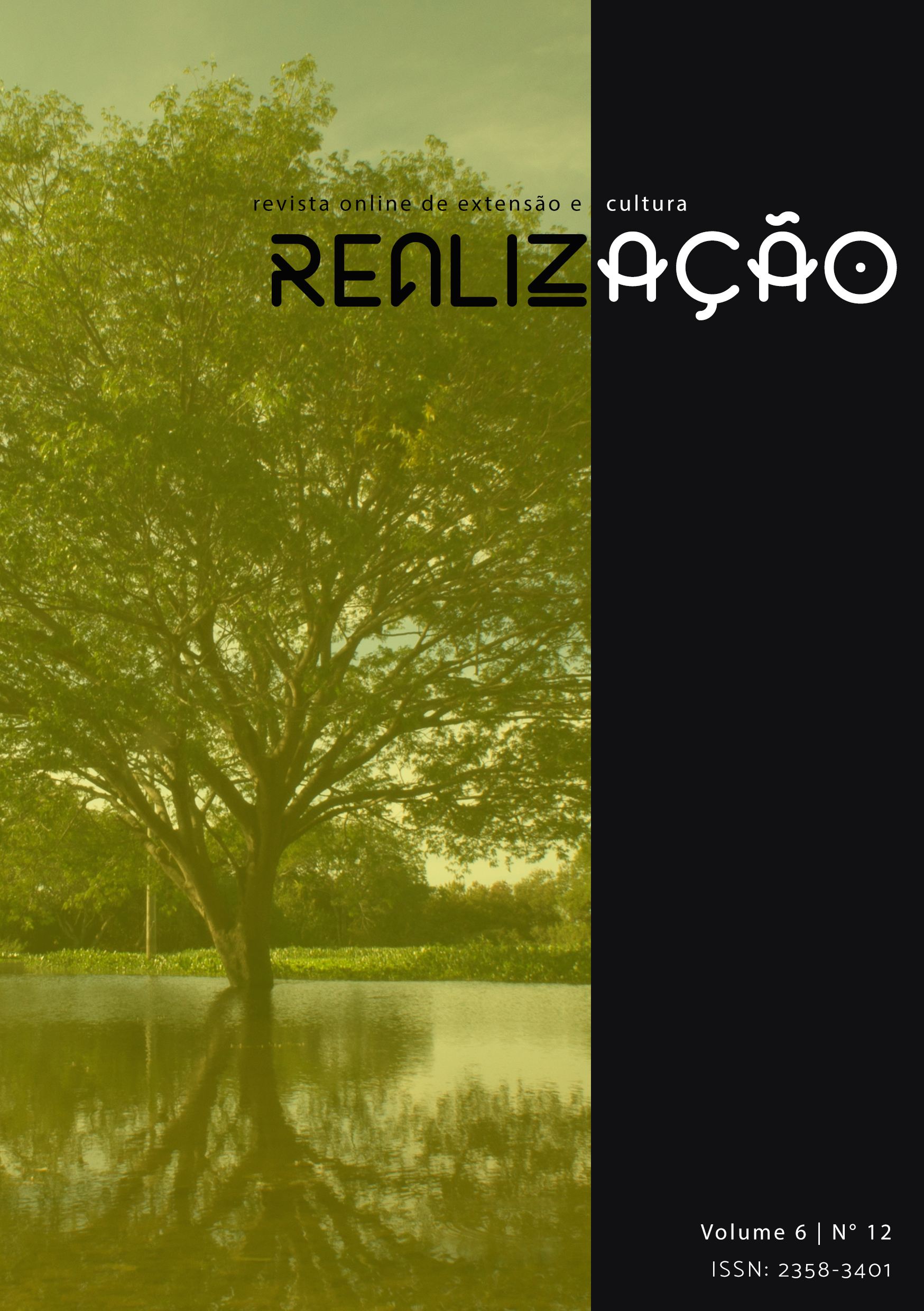Sustainable rabbit production in rural settlements
DOI:
https://doi.org/10.30612/re-ufgd.v6i12.10840Keywords:
Family Farming, Cuniculture, Source of income, InstallationAbstract
The concern with sustainable productive activities is emerging, where we seek activities that simultaneously improve the living conditions of the populations and conserve the environment. Thus the rabbit can be considered as a strategic animal and the rabbit culture as a sustainable productive activity. From this perspective, the creation of rabbits in groups already formed in the community of settlers in Itamarati, Eldorado, Cabeceira do Iguatemi and Mutum, belonging to the municipalities of Ponta Porã, Sidrolândia, Paranhos and Alvorada do Sul, respectively, all in Mato Grosso do These groups develop horticulture based on the techniques of organic production, where there are leftovers of vegetables and these surpluses were used to supply part of the rabbit's feed and thus develop a productive activity that provided income generation and protein source, allowing improvement in condition of families and especially group autonomy. In this context we aimed to describe the different types of infrastructure used as shelter for the animals in the creations in the settlements mentioned above. From the observations made in each community group, it was observed that the rabbit presented itself as an animal of importance for local sustainable development. The facilities where they were raised are rustic, designed by the producer himself and made with material present on the property, but with criterion taking into account the welfare of the animal.
Downloads
References
BONAMIGO, A.; WINCK, C. A.; SEHNEM, S. Diagnóstico da produção e comércio cunícula no Estado de Santa Catarina. Revista Brasileira de Cunicultura, v. 7, n. 1, p. 09-33. 2015.
CARVALHO, R. C. Caracterização da produção cunícula nas regiões de Trás-os-Montes, Minho e Galiza. Dissertação-Mestrado em Engenharia Zootécnica, Universidades Trás-os-Montes e Alto Douro, 2009.
DE ALMEIDA, D. G.; SACCO, S. R. Estudo da viabilidade técnica e econômica para implantação da cunicultura em pequena propriedade rural. Revista Perspectiva em Gestão, Educação & Tecnologia, v.1, n.1, p.1-9, 2012.
FERREIRA, W. M.; MACHADO, L. C.; JARUCHE, Y. G.; CARVALHO, G. G.; OLIVEIRA, C. E. Á.; SOUZA, J. A. S., CARRISSIMO, A. P. G. Manual prático de cunicultura. Bambuí: Associação Brasileira de Cunicultura, 2012.
LUKEFAHR S. Strategies for the development of small- and medium-cale rabbit farming in South-East Asia. Livestock Research for Rural Development. v.19, n. 9, p. 138. 2004.
MACHADO, L. C. Nota Técnica - Como enriquecer as gaiolas dos coelhos gastando pouco. 2019.
MACHADO, L. C; FERREIRA, W. M. Sistema de produção da cunicultura. Revista Brasileira de Cunicultura, v. 6, n.1, 2014.
MOURA, B. B. Produção de coelhos. Emater, Rio de Janeiro 2002.
OSENI, S.O.Rabbit production in low-input systems in Africa: prospects, challenges and opportunities. In: 10 TH WORLD RABBIT CONGRESS, 10, 2012, Sharm El- Sheikh. Proceedings. Egito: World Rabbit Science Association, 2012.
RIOS, D. M. BARBOSA, L. E.; NEVES, M. V. B.; BARREIROS, T. N.; OLIVO, M. Manual de cunicultura. Trabalho de conclusão de curso, Universidade do Estado da Bahia, 2011.
Downloads
Published
How to Cite
Issue
Section
License
Copyright (c) 2019 Janaina Tayna Silva, Orlando Filipe Costa Marques, Nara Graciele Sales de Lima, Andrea Maria de Araujo Gabriel, Euclides Reutter de Oliveira, Jefferson Rodrigues Gandra, Helen Chaves Henning, Natalie Ferreira Neves, Hellen Felicidade Durães, Murillo Martins Lima, Jéssica Castilho de Lima

This work is licensed under a Creative Commons Attribution-NonCommercial-ShareAlike 4.0 International License.
Autores que publicam nesta revista aceitam as normas de publicação, bem como, concordam com os seguintes termos:
(a) O Conselho Editorial se reserva ao direito de efetuar, nos originais, alterações da Língua portuguesa para se manter o padrão culto da língua, respeitando, porém, o estilo dos autores.
(b) Autores mantêm os direitos autorais e concedem à revista o direito de primeira publicação, com o trabalho simultaneamente licenciado sob a Creative Commons Atribuição-NãoComercial-CompartilhaIgual 4.0 Internacional que permite: Compartilhar — copiar e redistribuir o material em qualquer suporte ou formato e Adaptar — remixar, transformar, e criar a partir do material. A Creative Commons Atribuição-NãoComercial-CompartilhaIgual 4.0 Internacional considera os termos seguintes:
- Atribuição — Você deve dar o crédito apropriado, prover um link para a licença e indicar se mudanças foram feitas. Você deve fazê-lo em qualquer circunstância razoável, mas de nenhuma maneira que sugira que o licenciante apoia você ou o seu uso.
- NãoComercial — Você não pode usar o material para fins comerciais.
- CompartilhaIgual — Se você remixar, transformar, ou criar a partir do material, tem de distribuir as suas contribuições sob a mesma licença que o original.
- Sem restrições adicionais — Você não pode aplicar termos jurídicos ou medidas de caráter tecnológico que restrinjam legalmente outros de fazerem algo que a licença permita.


